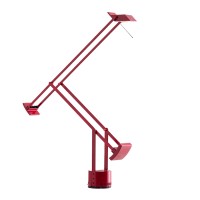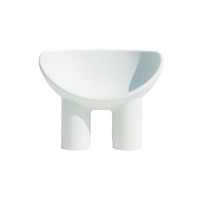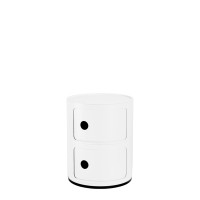-
Back
- Home
-
Indoor
-
-
Make your interiors comfortable with the best lighting choice..
-
-
-
-
New Snoopy →
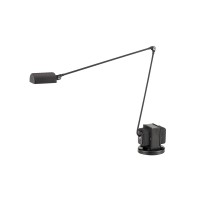 Lumina Daphine led table lamp Light color tone-2700°K WARM LIGHT, Color-Black Soft-Touch$705.52 $670.24
Lumina Daphine led table lamp Light color tone-2700°K WARM LIGHT, Color-Black Soft-Touch$705.52 $670.24- On sale!
- -5%
-
-
-
Outdoor
-
-
Make the beautiful season welcome, light up your outdoor spaces..
-
-
-
-
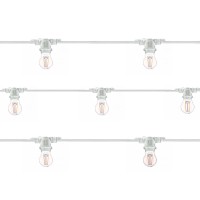 White led string lights 11m 11 E27 for outdoor Light color tone-3000°K WARM LIGHT$117.53 $61.11
White led string lights 11m 11 E27 for outdoor Light color tone-3000°K WARM LIGHT$117.53 $61.11- -48%
-
-
-
-
Technical
-
-

-
You can find a wide choice of architectural lights, bulbs, LED strips and much more..
-
-
-
-
-
-
Furniture
-
-
Discover our furnishing proposals, you will satisfy your design desire..
-
-
-
-
-
-
-
- In stock prompt delivery
-
Brands
-
-
Review
-
-
pages
pages
pages
pages
pages
-
Our reviews testify to our reliabilityOur reviews are collected via trustpilot and are based on genuine shopping experiences on our site.
-
-
- Blog news
-
Designer
-
-
Find out more
- Achille and Giacomo Castiglioni
- Alfonso Femia
- Adriano Rachele
- Andrea Tosetto
- Anna Castelli Ferrieri
- Antonio Citterio
- Anne Boysen
- Arne Jacobsen
- Antonio Lanzillo & Partners
- Atelier Oï
- Attila Varess
- BIG Bjarke Ingels Group
- Bobo Piccoli
- Boris Klimek
- Brian Sironi
- Bystrup Architects
- Calvi Brambilla
- Carlotta de Bevilacqua
- Cesare Cattaneo
- Chia-Ying Lee
- Christian Flindt
- Christophe Pillet
- Clara von Zweigbergk
- Davide Groppi
- Donegani & Lauda
- Edward Barber
- Elena Salmistraro
- Elio Martinelli
- Emiliana Martinelli
- Eric Solè
- Ernesto Gismondi
- Fabio Novembre
- Ettore Sottsass
- Fabricius & Kastholm
- Favaretto & Partners
- Faye Toogood
- Ferruccio Laviani
- Filippo Mambretti
- Formafantasma
- Foster + Partners
- Francesco Librizzi
- Francisco Gomez Paz
- Franco Bettonica Mario Melocchi
- Gae Aulenti
- GamFratesi
- Giancarlo Fassina
- Giancarlo Mattioli
- Gino Sarfatti
- Giò Colonna Romano
- Gio Ponti
- Giuseppe Maurizio Scutellà
- Guglielmo Poletti
- Hvidt & Mølgaard
- Jaime Hayón
- Jasper Morrison
- Jeremy Scott
- Joe Colombo
- Johanna Grawunder
- Jorge Herrera
- José Ignacio Ballester
- Jules Wabbes
- Karim Rashid
- KiBiSi
- Klaus Begasse
- Lorenza Bozzoli
- Konstantin Grcic
- Luca Nichetto
- Luta Bettonica
- Mads Odgård
- Marc Sadler
- Marcantonio Raimondi Malerba
- Marcel Wanders
- Marcello Ziliani
- Mariana Pellegrino Soto
- Mario Bellini
- Mario Botta
- Marta Laudani & Marco Romanelli
- Marta Perla
- Maurizio Quargnale
- Mercedes-Benz Style
- Michael Anastassiades
- Michele De Lucchi
- Moro & Pigatti
- Naoto Fukasawa
- Neil Poulton
- Nendo
- Neri & Hu
- Nika Zupanc
- Odo Fioravanti
- Oivind Slaatto
- Paola di Arianello
- Paola Navone
- Paolo Dell'Elce
- Paolo Rizzatto
- Patricia Urquiola
- Patrick Norguet
- Peter Bysted
- Philippe Starck
- Piero Lissoni
- Pietro Chiesa
- Pio & Tito Toso
- Poul Henningsen
- Ramón Úbeda & Otto Canalda
- Renzo Piano
- Richard Sapper
- Robert Dabi
- Roberto Paoli
- Rodolfo Dordoni
- Ron Gilad
- Ronan & Erwan Bouroullec
- Ross Lovegrove
- Samy Rio
- Santiago Calatrava
- Santiago Sevillano
- Scott Wilson
- Sebastian Wrong
- Sergio Asti
- Sergio Mazza
- Shoichi Uchiyama
- Sofie Refer
- Space Copenhagen
- Stefano Giovannoni
- Studio Job
- Studio OS ∆ OOS
- Tobia Scarpa
- Tommaso Cimini
- Verner Panton
- Vico Magistretti
- Victor Vasilev
- Vilhelm Lauritzen
- Vincent Van Duysen
- Wilmotte & Industries
- Yonoh Studio Creative
- YOY
- Zaha Hadid
-
-
-
Back
- Home
-
Indoor
-
-
Make your interiors comfortable with the best lighting choice..
-
-
-
-
New Snoopy →
 Lumina Daphine led table lamp Light color tone-2700°K WARM LIGHT, Color-Black Soft-Touch$705.52 $670.24
Lumina Daphine led table lamp Light color tone-2700°K WARM LIGHT, Color-Black Soft-Touch$705.52 $670.24- On sale!
- -5%
-
-
-
Outdoor
-
-
Make the beautiful season welcome, light up your outdoor spaces..
-
-
-
-
 White led string lights 11m 11 E27 for outdoor Light color tone-3000°K WARM LIGHT$117.53 $61.11
White led string lights 11m 11 E27 for outdoor Light color tone-3000°K WARM LIGHT$117.53 $61.11- -48%
-
-
-
-
Technical
-
-

-
You can find a wide choice of architectural lights, bulbs, LED strips and much more..
-
-
-
-
-
-
Furniture
-
-
Discover our furnishing proposals, you will satisfy your design desire..
-
-
-
-
-
-
-
- In stock prompt delivery
-
Brands
-
-
Review
-
-
pages
pages
pages
pages
pages
-
Our reviews testify to our reliabilityOur reviews are collected via trustpilot and are based on genuine shopping experiences on our site.
-
-
- Blog news
-
Designer
-
-
Find out more
- Achille and Giacomo Castiglioni
- Alfonso Femia
- Adriano Rachele
- Andrea Tosetto
- Anna Castelli Ferrieri
- Antonio Citterio
- Anne Boysen
- Arne Jacobsen
- Antonio Lanzillo & Partners
- Atelier Oï
- Attila Varess
- BIG Bjarke Ingels Group
- Bobo Piccoli
- Boris Klimek
- Brian Sironi
- Bystrup Architects
- Calvi Brambilla
- Carlotta de Bevilacqua
- Cesare Cattaneo
- Chia-Ying Lee
- Christian Flindt
- Christophe Pillet
- Clara von Zweigbergk
- Davide Groppi
- Donegani & Lauda
- Edward Barber
- Elena Salmistraro
- Elio Martinelli
- Emiliana Martinelli
- Eric Solè
- Ernesto Gismondi
- Fabio Novembre
- Ettore Sottsass
- Fabricius & Kastholm
- Favaretto & Partners
- Faye Toogood
- Ferruccio Laviani
- Filippo Mambretti
- Formafantasma
- Foster + Partners
- Francesco Librizzi
- Francisco Gomez Paz
- Franco Bettonica Mario Melocchi
- Gae Aulenti
- GamFratesi
- Giancarlo Fassina
- Giancarlo Mattioli
- Gino Sarfatti
- Giò Colonna Romano
- Gio Ponti
- Giuseppe Maurizio Scutellà
- Guglielmo Poletti
- Hvidt & Mølgaard
- Jaime Hayón
- Jasper Morrison
- Jeremy Scott
- Joe Colombo
- Johanna Grawunder
- Jorge Herrera
- José Ignacio Ballester
- Jules Wabbes
- Karim Rashid
- KiBiSi
- Klaus Begasse
- Lorenza Bozzoli
- Konstantin Grcic
- Luca Nichetto
- Luta Bettonica
- Mads Odgård
- Marc Sadler
- Marcantonio Raimondi Malerba
- Marcel Wanders
- Marcello Ziliani
- Mariana Pellegrino Soto
- Mario Bellini
- Mario Botta
- Marta Laudani & Marco Romanelli
- Marta Perla
- Maurizio Quargnale
- Mercedes-Benz Style
- Michael Anastassiades
- Michele De Lucchi
- Moro & Pigatti
- Naoto Fukasawa
- Neil Poulton
- Nendo
- Neri & Hu
- Nika Zupanc
- Odo Fioravanti
- Oivind Slaatto
- Paola di Arianello
- Paola Navone
- Paolo Dell'Elce
- Paolo Rizzatto
- Patricia Urquiola
- Patrick Norguet
- Peter Bysted
- Philippe Starck
- Piero Lissoni
- Pietro Chiesa
- Pio & Tito Toso
- Poul Henningsen
- Ramón Úbeda & Otto Canalda
- Renzo Piano
- Richard Sapper
- Robert Dabi
- Roberto Paoli
- Rodolfo Dordoni
- Ron Gilad
- Ronan & Erwan Bouroullec
- Ross Lovegrove
- Samy Rio
- Santiago Calatrava
- Santiago Sevillano
- Scott Wilson
- Sebastian Wrong
- Sergio Asti
- Sergio Mazza
- Shoichi Uchiyama
- Sofie Refer
- Space Copenhagen
- Stefano Giovannoni
- Studio Job
- Studio OS ∆ OOS
- Tobia Scarpa
- Tommaso Cimini
- Verner Panton
- Vico Magistretti
- Victor Vasilev
- Vilhelm Lauritzen
- Vincent Van Duysen
- Wilmotte & Industries
- Yonoh Studio Creative
- YOY
- Zaha Hadid
-
-
Constant current and alternating current: differences
If you've ever wondered what the difference is between constant current and alternating current, you're in the right place. In a previous article we covered the difference between constant current and constant voltage, while now we will focus on another fundamental aspect of electricity: the distinction between constant current and alternating current.
What is Constant Current (Direct Current)

Constant current, better known as direct current (DC - Direct Current), is a type of electric current in which the flow of electrons always moves in the same direction. This means that the value of the current does not change over time, remaining stable.
A classic example of a direct current source is a battery: when you connect a device to a battery, electrons flow in a single, constant direction. Direct current is commonly used in electronic devices such as smartphones, computers, and electric vehicles. Solar panels also generate energy in the form of direct current, which is then converted into alternating current for domestic use.
What is alternating current

Alternating current (AC), unlike direct current, changes direction periodically. This means that the flow of electrons reverses several times per second. The frequency of this inversion is measured in Hertz (Hz). For example, in Europe alternating current has a frequency of 50 Hz, while in the United States it is 60 Hz. The household electrical grid runs on alternating current because it is more efficient at transmitting over long distances. This type of electricity is used to power appliances, lighting and virtually every device you plug into your home.
Differences between constant current and alternating current

Now that you understand what constant current is and what alternating current is, let's see the main differences between the two:
* Direction of electron flow: Direct current always moves in a single direction, while alternating current changes direction periodically.
* Usage: DC is ideal for electronic devices, batteries and low voltage circuits. Alternating current is preferable for long-distance distribution of electricity and for powering motors and household appliances.
* Energy transformation: Alternating current can be easily transformed into different voltages via transformers, making it more efficient for transmission. Direct current, on the other hand, needs specific converters to be adapted to different voltages.
* Efficiency in transmission: Alternating current suffers less energy loss in long-distance transmission than direct current, which is why it was chosen for global electrical distribution.
When to use direct current and when to use alternating current

If you need to power sensitive electronic devices, such as a computer or phone, then DC is the right choice. If, however, you are designing a domestic or industrial electrical system, you will inevitably have to work with alternating current.
Another case in which choice is fundamental is renewable energy. Solar panels and batteries store direct current energy, but to be able to use it in the home network it must be converted into alternating current via an inverter.
Constant current or alternating current in lighting system
In the lighting industry, the choice between direct and alternating current depends on the specific application. LED lamps, which are increasingly used for lighting homes, offices, studios, venues and exhibitions, work with direct current and often require a transformer or driver to convert the alternating current from the home network into direct current.
On the other hand, traditional incandescent and fluorescent lamps can run directly on alternating current. For this reason when designing a lighting system, it is important to consider the type of lamps you will use and ensure that the power system is adequate to maximize the energy efficiency and life of the lamps.
Other sectors
There are several areas where you need to carefully consider whether to use direct or alternating current:
* Automotive: Electric vehicles run on direct current, because batteries store energy in this form. However, some internal systems may use alternating current.
* Industry: Factories and industrial plants use both alternating current for motors and machines and direct current for electronic control circuits.
* Telecommunications: Telecommunications equipment runs almost exclusively on direct current, because it offers greater stability.
* Electric networks: Alternating current is the main choice for energy distribution, but in recent years the use of high voltage direct current (HVDC) has been experimented with to reduce energy losses over very long distances.
Constant and alternating current power supplies
In addition to understanding the difference between constant current and alternating current, let's also talk about power supplies.
Constant current power supplies keep the current supplied constant, regardless of the variation in voltage. They are ideal for applications that require a stable current, such as charging batteries or powering LEDs, where constant current is crucial to avoid damage or malfunctions. As the load changes, the power supply adapts the voltage to keep the current constant.
Constant voltage (VC) power supplies, on the other hand, keep the voltage supplied constant, regardless of current variations. They are ideal for powering electronic devices that require stable voltage, such as sensitive circuits or low-power devices. When the load changes, the power supply adapts the current to keep the voltage constant.
In conclusion, understanding the difference between constant current and alternating current is essential for anyone who works with electricity, from the electrician to the engineer, but also for those who simply want to better understand how the devices they use every day work.
Now that you have the necessary information, you know exactly when to consider one and when the other, and which sectors depend most on these factors.
Read more insights on our Diffusione Luce website!
Written by Alice Pruccoli
Share this content






